I miss a good, old-fashioned Southern flea market, the kind where you can find anything from fishing lures to knives to rusty tools to outdated medicines to questionable Confederate adoration. There’s just nothing like that up here. The western term is “swap meet”, but I haven’t even been able to find one of those. At least in this corner of the state swap meets are infrequent and are nothing like those in the South. I was eager to find some alternative.The Skagit County Garage Sale is about the closest to a classic flea market that I’ve found. However, that only happens twice a year. If you do a search using the phrase “flea market” you’re more likely to find brick-and-mortar antique stores. It’s also likely that swap meets up here are seasonal and the schedule may fire up as the weather improves.
Regardless, for the time being I was stuck with nothing to fix my junk addiction. I decided to check out other venues. There seem to be lots of thrift stores in the area, so that was my first target.
There are lots of similarities between thrift stores and flea markets. The biggest difference, though, is that thrift stores are filtered, somewhat curated versions of flea markets. Both can have rare treasures, but the flea market has a sensory component that’s hard to match.
In our area we’ve got the standard players, Goodwill being the largest and best known. My BYOI friend Peter manages Bargains Galore in Mount Vernon, which benefits a local private school. It’s a large store and Peter has a good eye for the unusual. He will showcase some of the rarer finds at the front of the store. I enjoy popping by for an occasional visit.
Driving through Anacortes one day I spotted several thrift stores in close proximity. Recently I made a trek out there to see what they had. I also had an ulterior motive. We have a house full of stuff up here. I wanted to get a feel for the pricing of some items and to inquire about estate sale services.
My first stop in Anacortes wasn’t a thrift store but would probably fit the PNW definition of a flea market. It was an antique store, but with an unusual twist. Laura had spotted that Alley Cat Antiques handles estate sales, so I headed there first.
Alley Cat Antiques is located on the main drag of Anacortes on Commercial Street. Half of the store is antiques and the other half is a marine supply store that’s been a long-time fixture in town. They had been in a building just up the street, but just recently moved into this facility.
I arrived to find a sale in progress. The basement of the Olson Building next door to Alley Cat was full of…stuff, and this was a rare opportunity to explore. The back courtyard was also full of interesting things for sale, I was escorted right past the antiques and marine wares to the back yard. There I found an array of rusty stuff, some sheds, and a tractor-trailer used for storage.
I’ve been watching the show “Forged in Fire” on the History Channel. It’s a game show featuring blacksmiths, and as part of the competition they have to make knives from unusual metals. I spotted an anvil and wondered what could be forged from all the stuff in this yard.
My next stop was the Olson Building. The building once housed a bar, then a hardware store, and most recently a now-defunct antique store. There is currently a bicycle shop and record store in part of the two-story building.
Alfred Olson opened the Skagit Saloon when the building was completed in 1891. Apartments occupied the second floor. During Prohibition the saloon closed and other business came and went. The building is on the National Register of Historic Places.
The Port of Anacortes now owns the Olson Building as well as other buildings in the block. In 2015 a study showed significant structural problems with the Olson Building. With restoration estimates running from $1.3 million to $3 million, the future of the building is in doubt. The sheds and out buildings behind Marine Supply have already been condemned. These had yellow tape and signs posted when I was there.
Alley Cat Antiques was selling off material and providing rare access to the basement of the Olson building. A worker pointed me in the direction of the basement entrance and I made my way in.
There I found long rows of new “old” stock – items that had been in the basement for years but never sold. Most of this was marine hardware, including pulleys and hoists, bolts, fasteners, etc., etc. There was none of it that I wanted to buy, but I wasn’t going to pass up the opportunity to explore a historic building.
I made my way back upstairs and into the retail portion of the store. The Marine Supply part had what the name implies – brass fittings and parts for boats. So, naturally, I bought a harmonica. Actually, it was an investment – an exchange for information about the building itself.
The antique portion of the shop had about what you’d expect to find. I chatted with the proprietors about estate sales and got some info for dealing with the Wright estate, then browsed the shop a bit more.
There were a couple more thrift stores I wanted to explore in the area. I stopped by the Soroptimist’s Store a couple of blocks over from Commercial Ave. It was smaller than I had thought it would be. Most of the much larger building seems to be dedicated to volunteer work by the Soroptimists and the store is only a smaller part.
From there I went to the Red Door Thrift Shop. With a name like that you would have thought it would be run by the Lutherans, but, no. It was run by Episcopalians. It was even smaller than Soroptimists, with pretty much the same things.
By that time I’d had my fill of thrift and antiques and headed on back home. The next day was Saturday, and also opening day for many of the Farmers Markets in the area. The Bellingham market had already been open for a few weeks, so I decided to head up that way.
Online announcements advertised it as starting at 9:00 am. However, the market didn’t open until 10:00. I killed a bit of time in the Starbucks nearby, watching the often unusual denizens of Bellingham. The time came for the market to open and I headed have that way.
The Bellingham Farmers Market is much like others I’ve seen. There was organic produce, crafts, jewelry, soaps, and other products. It reminded me of the market in Fort Pierce, although not quite as large. There was a very nice main covered area and next to that an open space for booths.
There were buskers, but these were no ordinary buskers. Young musicians were playing in different areas. There was a young girl with a keyboard, a boy with a fiddle playing some of the same tunes I’ve been learning, and a teenager with a guitar. Each of these had a badge identifying them as an “official” Bellingham Market busker. They were all quite good.
There was even a fringe element. On the sidewalks leading to the market there were a few vendors that didn’t want to pay the market fees but still wanted to take advantage of the market traffic. One woman had a table set up with bumper stickers that read “I didn’t vote for him” and another was selling baskets with goodies. Another unofficial busker was getting set up with a guitar up the street.
While the Bellingham Market was certainly the most diverse and fun, it still doesn’t come close to my experience with flea markets. I’ll definitely check out the Mount Vernon Farmers Market when it opens in a week or so, but I look forward to when the swap meets kick in full swing. I definitely want to visit one, even if it means heading further afield in Washington.



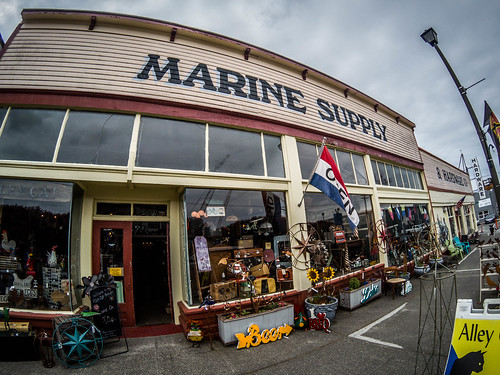






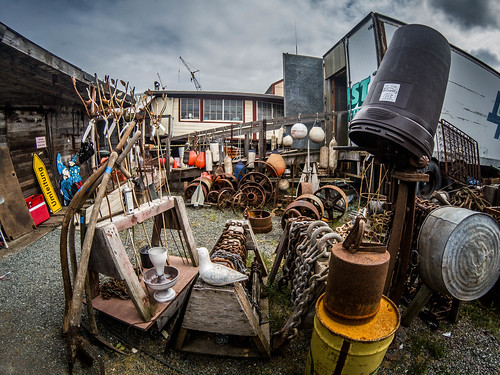









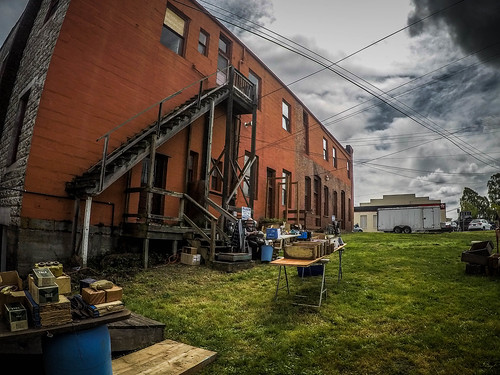







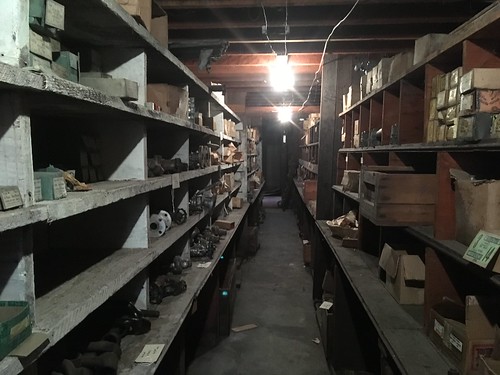
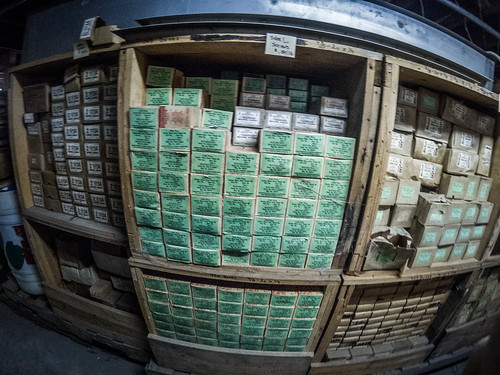













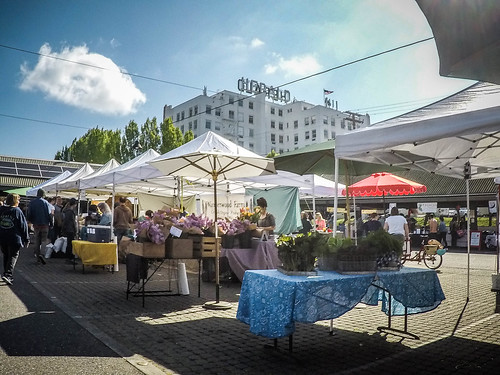




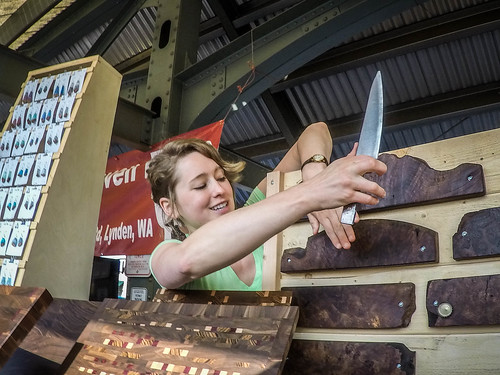



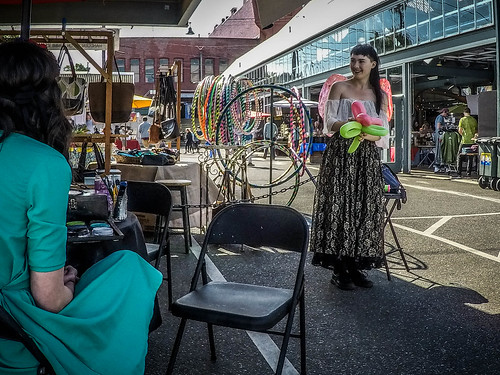





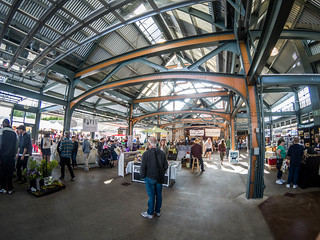
Nice story.